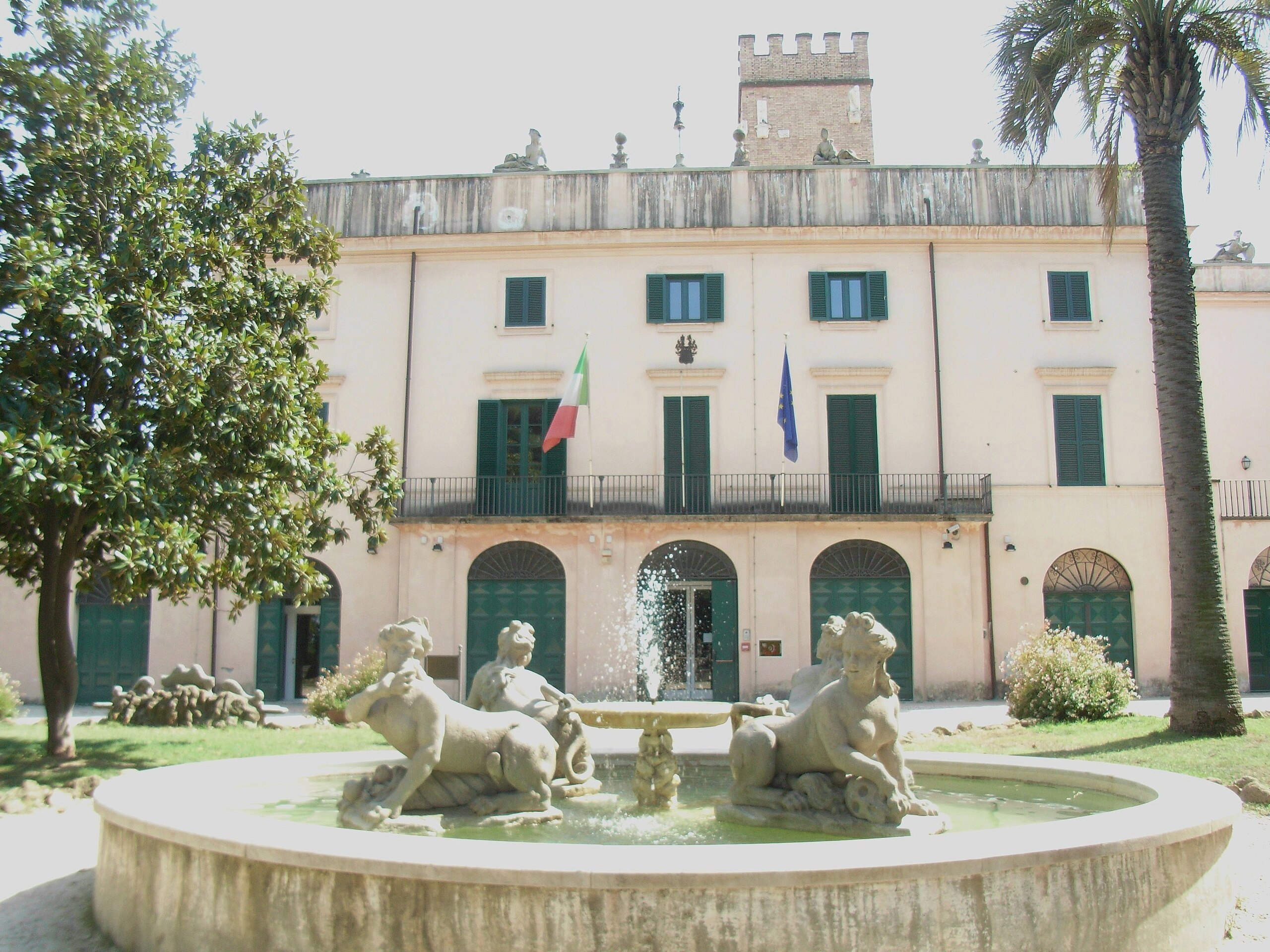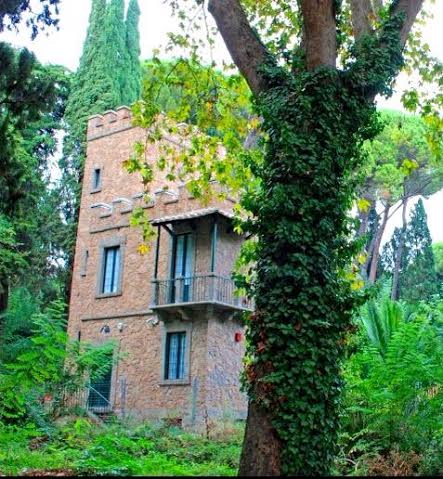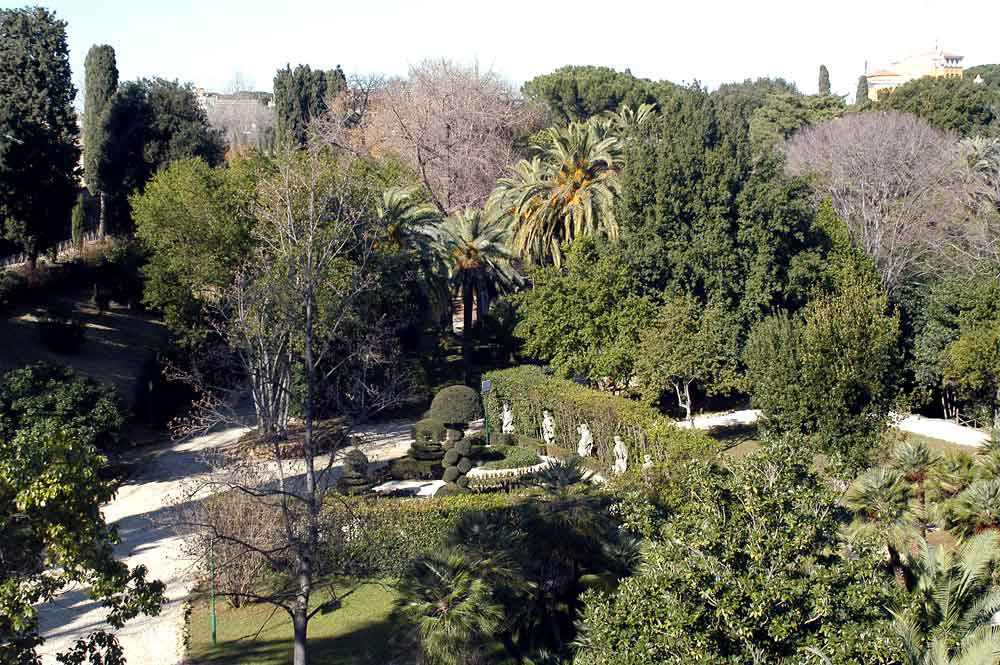Villa Sciarra

Villa Sciarra is one of the urban villas in Rome where history has been erased with a chisel ...

The Villa has an extension of seven and a half hectares located on the slopes of the Janiculum hill between the districts of Trastevere and Monteverde Vecchio, leaning against the Gianicolense Walls, which can be accessed by two possible entrances: the first on piazzale Wurts, designed by Pio Piacentini, which takes its name from the last owner, George Washington Wurts, to whom we owe the arrangement of the garden and the monuments it contains, and the second on Largo Filippo Minutilli.

It takes its name from the papal noble family of Sciarra.
The history of Villa Sciarra begins in the pre-Roman era, when a sanctuary consecrated to the nymph Furrina was located in that area.
Later in this area the famous "Gardens of Caesar" arose, which, coming down from Monteverde, declined as far as the Tiber.

In 1549, the land was bought by private individuals and a first building was built on it.
Later, in 1575, the area where the villa is located was purchased by Monsignor Innocenzo Malvasia, who built the homonymous Casino, a two-storey building with a loggia, located on the land owned by the American Academy in Rome.

In 1614 the property was purchased by Gaspare Rivaldi, contractor of the Papal Customs. Subsequently, the area acquired considerable value and importance as, following the construction of the Gianicolense walls, it became an urban villa from an extra-urban villa.
In 1647 the villa was purchased by Cardinal Antonio Barberini, former owner of the Casino Malvasia, while in 1710 it was sold to Cardinal Pietro Ottoboni, who kept it until his death in 1740.

Later it became the property of the Barberini family again, and precisely of Cornelia Costanza Barberini, wife of Giulio Cesare Colonna di Sciarra, under whom the villa was enlarged, until it occupied the whole area of ??the Gianicolo and Monteverde between the ancient walls. Aurelian and the new Gianicolense Walls, and embellished with the purchase, among others, of the Orto Crescenzi in 1811.
Commemorative plaque on the walls of Villa Sciarra. Memory of donor Henriette Wurts and spouse. In the plaque, placed in 1932 in memory of the opening to the public and assigned to the Italian Institute of Germanic Studies, the name of Mussolini has been chiseled.

In the period of the Roman Republic (1849) the Casino Barberini and the Casino Malvasia were heavily damaged by the fighting between the republican troops commanded by Giuseppe Garibaldi who had barricaded themselves there and the French ones of General Nicolas Charles Victor Oudinot.
The Barberinis later restored the Casino to its original form, but the property was then lost by Prince Maffeo II of the Sciarra following erroneous financial speculations. The land around Villa Sciarra was thus divided up on the basis of the conventions stipulated in 1889 between the municipality of Rome, the Compagnia Fondiaria Italiana and the prince himself, and became a building area. While the villa, which remained the property of the Sciarra, was then sold in 1896 to George Clarke and then to the Società di Credito ed Industria Fondiaria Edilizia, from which the last owners bought it on May 15, 1902: George Wurts, an American passionate about gardens, and his wife Henriette Tower, wealthy heiress of Philadelphia.
The couple completely renovated the building in neo-Renaissance style and redesigned the garden: they placed numerous eighteenth-century sandstone statues from the Visconti Palace in Brignano Gera d'Adda, in the province of Bergamo, which in turn fell into disrepair and sold at auction. in 1892.
In 1906 the project for the construction of the Castelletto in neo-Gothic style was started, which was then built in 1908-1910. Also in 1908, work began on the construction of the entrances to via Calandrelli.

George Wurts died in 1928 and four years later his wife donated the villa to Benito Mussolini, on the condition that it be used as a public park. In turn, Mussolini donated it to the Romans: the plaque on the villa still exists.

The reference to Benito Mussolini, to whom the English couple had left the villa, was then erased with a chisel.
In April 1936 the philosopher Martin Heidegger gave a lecture there entitled "Hölderlin and the essence of poetry.
Video: Villa Sciarra
Map: Villa Sciarra
Address: Viale delle Mura Gianicolensi, 11, 00153
Roma (RM) Lazio
Latitude: 41.883037527221916
Longitude: 12.464804649353026
Site: http://www.sovraintendenzaroma...
vCard created by: CHO.earth
Currently owned by: CHO.earth
Type: Villa
Function: Cultural Center
Creation date: 29-01-2021 04:18
Last update: 24/06/2022